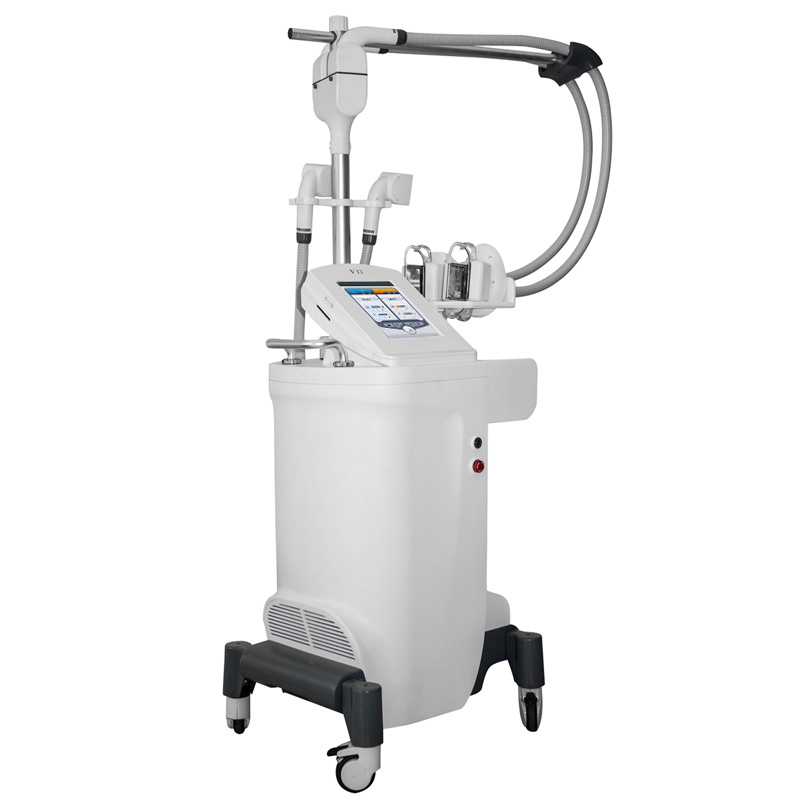Demystifying Cryolipolysis Unlocking the Science Behind Fat Freezing
Understanding Cryolipolysis
The Basics of Cryolipolysis
Cryolipolysis is a non-invasive fat reduction technique that utilizes controlled cooling to eliminate unwanted fat deposits. This innovative procedure targets specific areas of the body, effectively reducing localized fat without the need for surgery. As a relatively new field of aesthetic medicine, it offers an appealing option for patients seeking body contouring solutions. Understanding the fundamental principles of this technology is essential for professionals in the field.
How Cryolipolysis Works
Process of Fat Freezing
The cryolipolysis treatment begins with the application of a specialized device to the target area. This device delivers controlled cooling, inducing a process known as adipocyte apoptosis, where fat cells undergo programmed cell death. During this process, the surrounding tissues remain unaffected due to the selective nature of the cooling. Patients typically experience minimal discomfort as the temperature is carefully monitored throughout the procedure. Over time, the body metabolizes and naturally eliminates the crystallized fat cells, resulting in a more contoured appearance.
Safety and Effectiveness
Cryolipolysis has been shown to be a safe and effective method for fat reduction through various clinical studies. The technology has received FDA clearance, ensuring it meets stringent safety standards. Though some individuals may experience mild side effects such as temporary redness or swelling, these typically resolve quickly. Effectiveness varies by individual, but many report noticeable results within weeks following treatment. Comprehensive understanding of the mechanism and safety profile is vital for specialists to assess patient candidacy and manage expectations.

The Science Behind Cryolipolysis
Biochemistry of Fat Cells
Role of Cold Temperatures in Fat Cell Reduction
The biochemistry of fat cells plays a crucial role in cryolipolysis. Fat cells, or adipocytes, are sensitive to temperature changes. When subjected to cold temperatures, these cells undergo structural changes that lead to their gradual demise. Cryolipolysis specifically targets subcutaneous fat while leaving surrounding tissues unharmed, making it a precise treatment option. Understanding the biological responses involved in this fat reduction process can enhance the knowledge base of practitioners in the aesthetic field.
Clinical Studies Supporting Cryolipolysis
Numerous clinical studies have confirmed the efficacy of cryolipolysis. Research published in reputable medical journals demonstrates that patients experience significant and measurable reductions in subcutaneous fat post-treatment. These studies provide valuable data on parameters such as treatment duration, number of sessions, and overall patient satisfaction. Keeping abreast of recent findings helps practitioners make informed decisions regarding treatment protocols and patient outcomes.
Benefits of Cryolipolysis
Non-Invasive Nature of the Treatment
One of the standout benefits of cryolipolysis is its non-invasive nature. Unlike traditional liposuction, patients do not require anesthesia, incisions, or significant recovery time. This aspect is particularly appealing to those who wish to avoid surgical interventions. The minimal downtime associated with the procedure allows patients to resume their daily activities almost immediately, making it a convenient option in today’s fast-paced world.
Long-Term Results and Maintenance
The results achieved through cryolipolysis can be long-lasting when paired with a healthy lifestyle. Once the treated fat cells are eliminated, they do not regenerate. However, maintaining these results requires a balance of regular exercise and a nutritious diet. Encouraging patients to adopt sustainable habits can help ensure their outcomes are both satisfying and enduring. Thus, the role of healthcare professionals in providing guidance on lifestyle choices post-treatment is essential.
Areas Suitable for Treatment
Cryolipolysis is versatile and can be applied to various areas of the body where stubborn fat deposits exist. Common treatment areas include the abdomen, flanks (love handles), thighs, and under the chin. This adaptability makes it an attractive option for many individuals seeking targeted fat reduction. Understanding the most suitable treatment areas can help practitioners develop personalized treatment plans that cater to specific patient needs.
Anchorfree’s Contribution to Cryolipolysis Technology
Introduction to Anchorfree
Anchorfree is a pioneering company that has made significant advances in cryolipolysis technology. By focusing on innovation and user-centered design, Anchorfree has established itself as a leader in the development of devices for non-invasive fat reduction. Their commitment to research and development helps to ensure that their products remain at the forefront of aesthetic technology. This knowledge is essential for professionals looking to enhance their practice through the incorporation of cutting-edge tools.
Innovative Tools and Devices Developed by Anchorfree
Key Features and Advantages
Anchorfree has developed a variety of cryolipolysis devices that incorporate the latest advancements in technology. These devices offer critical features such as adjustable suction strength and temperature controls, ensuring optimal patient comfort and treatment efficacy. The integration of intelligent software allows practitioners to personalize treatment parameters, further enhancing results. Understanding these device characteristics can aid practitioners in optimizing their patient care.
Device Specifications
Anchorfree‘s devices are designed with state-of-the-art materials and engineering, providing reliability and effectiveness in clinical settings. Specifications such as cooling capabilities, treatment duration, and ergonomic design enhance usability for practitioners. The performance metrics of these devices are backed by clinical research, reinforcing their credibility in the field. Familiarity with these specifications allows professionals to make informed choices when incorporating cryolipolysis technology into their practice.
User-friendly Interfaces
The user-friendly interfaces of Anchorfree devices simplify the treatment process for practitioners. Training and onboarding become seamless with intuitive controls, thereby minimizing errors and improving patient safety. Moreover, the devices are equipped with features that provide real-time feedback on treatment progress, ensuring optimal outcomes. Mastery of these interfaces enables healthcare professionals to deliver precise and effective cryolipolysis treatments, ultimately benefiting patient satisfaction.

Comparing Cryoliplysis to Other Fat Reduction Methods
Liposuction vs. Cryoliplysis
Invasiveness and Recovery Time
When comparing liposuction to cryolipolysis, one of the most significant differentiators is the invasiveness of the procedures. Liposuction is a surgical procedure that requires anesthesia, incisions, and often involves a longer recovery time due to its invasive nature. Patients may experience significant discomfort, swelling, and bruising for several days or weeks post-surgery. In contrast, cryolipolysis is a non-invasive option that typically involves no anesthesia or incisions. Most patients can resume normal activities immediately following treatment, with minimal discomfort or downtime associated with the cooling process.
Effectiveness and Suitability
In terms of effectiveness, liposuction generally yields immediate and substantial fat removal results but is best suited for individuals looking to remove larger volumes of fat or contour specific areas of the body. Cryolipolysis, on the other hand, provides a gradual reduction of fat over weeks or months, which can be particularly appealing for patients looking for a less aggressive approach to body contouring. It is ideal for those who are already close to their target weight but want to address stubborn fat pockets. Understanding the individual needs of patients can help practitioners recommend the most suitable option.
Preparing for a Cryoliplysis Treatment
Consultation and Assessment
Preparation for a cryolipolysis treatment involves a comprehensive consultation and assessment. During this initial meeting, practitioners should evaluate the patient’s medical history, evaluate areas of concern, and discuss the patient’s expectations. A thorough understanding of the patient’s lifestyle, weight history, and specific fat concerns is essential for crafting an effective treatment plan. This collaborative discussion helps set realistic goals and prepares patients for the outcomes they can expect post-treatment.
What to Expect During the Procedure
Patients can expect a relatively comfortable experience during the cryolipolysis procedure. The treatment typically lasts between 35 to 75 minutes, depending on the area being treated. After the targeted area is prepared, the applicator will be placed on the skin, and the cooling process will commence. Initial sensations might include a cooling effect followed by sensations of pulling or tugging as the device suctions the skin and fat layer. Practitioners should explain each step of the process to ensure patients feel informed and comfortable throughout the procedure.
Aftercare and Results
Post-Treatment Care
Post-treatment care is essential for ensuring optimal results following cryolipolysis. Patients may be advised to massage the treated area for a few minutes daily to enhance the metabolic process responsible for breaking down the frozen fat cells. Hydration is also encouraged to support the body’s detoxification process. Practitioners should inform patients about potential mild side effects, such as redness or swelling, which typically resolve on their own. Providing effective aftercare guidance enhances patient satisfaction and overall treatment success.
Tracking Progress Post-Treatment
Tracking progress after cryolipolysis is an important aspect of patient care. Patients are typically advised to schedule follow-up appointments to monitor results and assess the degree of fat reduction achieved. Regular check-ins also provide opportunities for practitioners to address any questions or concerns and reassess treatment plans if necessary. Visual documentation, such as before-and-after photographs, can motivate patients and provide a clear depiction of changes over time. Encouraging patients to maintain a healthy lifestyle will further enhance their results and longevity of the treatment.
A Word from Experts
Testimonials from Practitioners
Practitioners emphasize the transformative potential of cryolipolysis and the positive feedback they receive from patients. Many report witnessing significant improvements in body contours, boosting their patients’ confidence and overall well-being. Testimonials from experts highlight the satisfaction of delivering a non-invasive solution that produces visible results without the risks associated with surgery. Such endorsements from seasoned practitioners reinforce the credibility and effectiveness of cryolipolysis within the aesthetics field and foster trust among potential candidates for the treatment.
Incorporating cryolipolysis into aesthetic practices can not only broaden treatment offerings but also allow practitioners to engage with patients seeking effective, less invasive fat reduction methods. Being well-versed in the nuances of the technology and treatment protocols can significantly enhance patient outcomes, leading to long-term success in body contouring practices.







